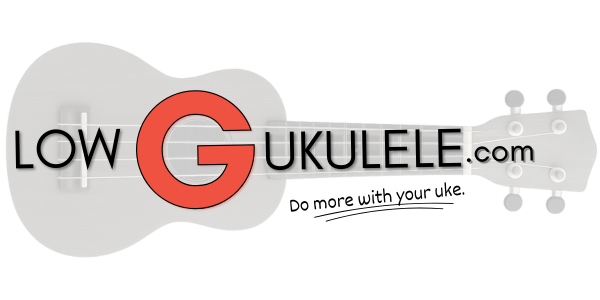A couple week ago, I posted an article about the CAGED system for ukulele, and I got some great feedback. Some found the article helpful and clear; others found it to be a confusing mess.

If you’ve been exposed to CAGED or a similar system before, either on guitar or elsewhere, my original article might make a lot of sense. If CAGED is new to you, though, that article probably isn’t much help as it throws a ton of information at you without any detailed explanation.
So I’ve decided to go back to square one and write a series of articles called “CAGED Foundations for Ukulele” that break things down in simpler terms, one chunk at a time.
The goal of today’s introduction article is to answer one simple question:
What is CAGED for ukulele?
To sum up the answer in a single statement: CAGED is a system for understanding the entire ukulele fretboard. It often gets written off as just a movable chord shape system, but that’s just the first (although very important) layer.
CAGED takes those moveable chord shapes and relates them to scale shapes, allowing you to interweave chords and melody and modify your chord shapes without needing to memorize every moveable shape or reference a chord dictionary.
CAGED may be for you if…
- You have ever felt trapped in the first three or four frets of your uke, wondering how all of those really great players out there move around effortlessly on the higher frets.
- You have ever wanted to better understand how chords and scales fit together.
- You have ever wanted to be able to know the why behind what you are playing, rather than just reading a chord chart or a piece of tablature.
All of that said, CAGED is not the only system for understanding all of this, but I do think it is a particularly beginner friendly system because it builds on a foundation you probably already practice and use all of the time: simple open chord shapes.
Specifically, CAGED for ukulele is built on these 5 shapes:

If you recognize those five chords, congratulations! You have already mastered the first step of CAGED for ukulele. Everything else is built on that foundation.
Here’s one quick example of how CAGED works to get the gears turning in your head, but don’t worry if this seems to jump a few steps ahead. I’ll be going over everything in more detail in future articles:
Moving a chord up the neck in CAGED for ukulele.
How can knowing your basic chord shapes help you play anywhere on the neck? The secret to CAGED is that those basic chord shapes you already know can be ANY chord. The simple, one-finger C chord that we all learned in our first ukulele lesson can also be a D chord, and E chord, an F chord, etc. if you know how to move it and where to put it.
Here’s that familiar C chord:

The C chord has C notes in two places: the open C string and the third fret of the A string.
Treating this chord as a CAGED shape just means we take it and put it somewhere else on the fretboard where those highlighted C notes line up with other notes. So if we want a D chord, an E chord, or an F chord, we just move it up the fretboard:

Before some of you lose hope looking at these, please understand that the barre chord shapes of CAGED are only one aspect of the system. If you don’t like them or can’t play them, there are other, easier chord forms that don’t require barres and other aspects to the system that are just as, if not more, useful.
You don’t need to be able to play a chord shape like this, but it is extremely useful to be aware that it exists and to learn how to use pieces of it.
Wrap-Up
In future articles, I’ll break down each of the five chord shapes and show you all sorts of interesting things you can do with them. We’ll explore:
- How to play partial voicings and triads for each chord shape to get different sounds (and to work around those pesky barres and crazy fingerings).
- How to modify a chord shape to make it minor or emphasize a certain scale degree
- How scales relate to each chord shape, giving you the tools to create interesting chord melody arrangements
I’ll leave you with the CAGED cheat sheet I included with the overview article. If you’re going to focus on one thing here at the start, work on memorizing the names of the notes at each fret up and down each string. This is a critical tool to have in your back pocket if you hope to master the fretboard.
Next week, I’ll be tackling the C chord shape and showing you how it works, how to move it, and how to modify it.
CAGED for Ukulele Cheat Sheet Download

Leave a Reply